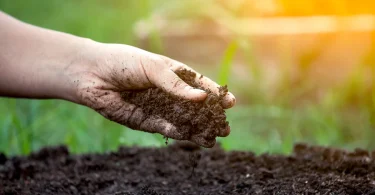Indoor gardening has become more popular than ever, and whether you’re growing leafy houseplants, succulents, herbs, or decorative flowers, one truth remains constant: healthy roots mean healthy plants. And the secret to healthy roots begins with choosing the right indoor potting mix.
Many beginners assume soil is “just soil,” but indoor plants have very different needs compared to outdoor ones. Inside the home, plants depend entirely on their potting mix for moisture, nutrients, oxygen, and support. Using garden soil or the wrong growing medium often leads to compacted roots, slow growth, root rot, yellowing leaves, and stressed plants.

Essential Ingredients in Indoor Potting Mix
Most indoor potting mixes use a combination of the following components:
1. Coco Coir
A sustainable, eco-friendly base made from coconut husks. It:
- Retains moisture
- Improves aeration
- Has a neutral pH
- Encourages strong root development
2. Peat Moss
Lightweight and excellent for moisture retention. It’s slightly acidic, which many houseplants prefer.
3. Perlite
These white, airy granules help:
- Drain excess water
- Keep the soil loose
- Add oxygen pockets
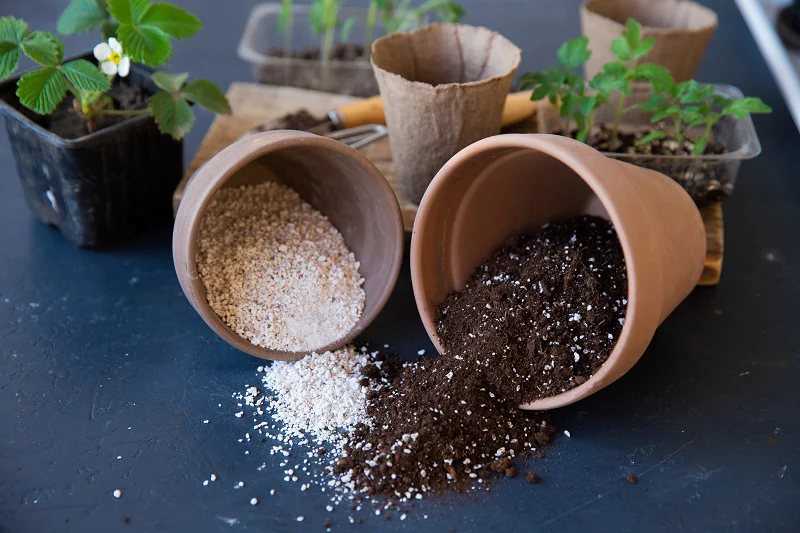
4. Vermiculite
Helps retain moisture and nutrients; ideal for thirsty plants.
5. Worm Castings or Compost
Adds nutrients, boosts microbial life, and improves soil structure.
6. Pine Bark Fines
Used in premium mixes to create structure and allow roots to expand.
7. Pumice or Coarse Sand
Improves drainage, especially for succulents and cacti.
Best Indoor Potting Mix Combinations for Healthy Roots
Different plants prefer different blends. Here are some tried-and-tested recipes:
1. Universal Indoor Potting Mix (Most Houseplants)

- 40% coco coir or peat moss
- 30% perlite
- 20% compost or worm castings
- 10% pine bark
This mix balances moisture, drainage, and nutrition perfectly.
2. Indoor Mix for Succulents & Cacti
These plants hate soggy soil.
- 10% compost
- 40% coarse sand or pumice
- 30% coco coir
- 20% perlite
3. Mix for Indoor Herbs
Herbs like basil, mint, and parsley need moisture but also airflow.
- 20% perlite
- 50% coco coir
- 30% compost
4. Mix for Indoor Flowering Plants

Flowers need nutrient-rich soil.
- 10% perlite
- 40% coco coir
- 30% compost
- 20% vermiculite
How to Know You’re Using the Right Potting Mix
Your plants will show signs when they’re happy:
- Leaves are bright and vibrant
- Soil dries evenly within a few days
- Plant roots appear white, firm, and healthy
- New leaves appear regularly
- No foul smell or fungus buildup
The right potting mix ensures strong, fast root development, stable moisture control, and improved nutrient uptake.
How to Pot or Repot Indoor Plants Correctly
Even the best potting mix won’t help if the potting method is wrong. Here’s how to do it the right way:
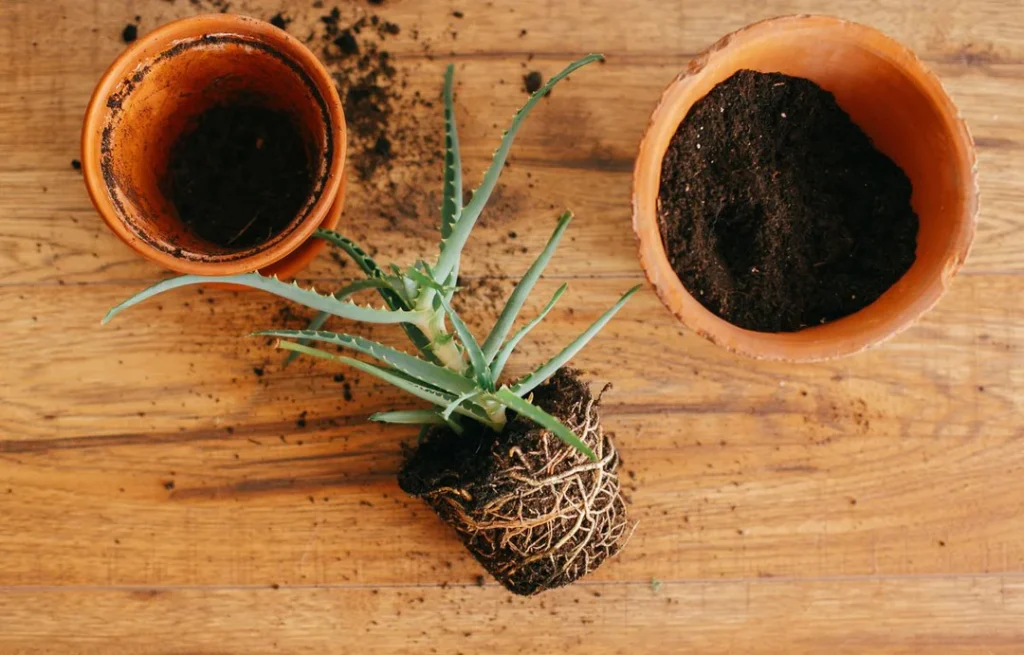
Step 1: Choose the Right Pot
- Must have drainage holes
- Should be slightly larger than the current pot
- Material matters: clay dries faster, plastic holds moisture
Step 2: Prepare the Mix
Always moisten the mix before adding to the pot. This activates the medium and prevents dry pockets.
Step 3: Loosen the Roots
Gently loosen the root ball, especially if the plant is root-bound.
Step 4: Position the Plant
Place it at the center and fill around with your potting mix.
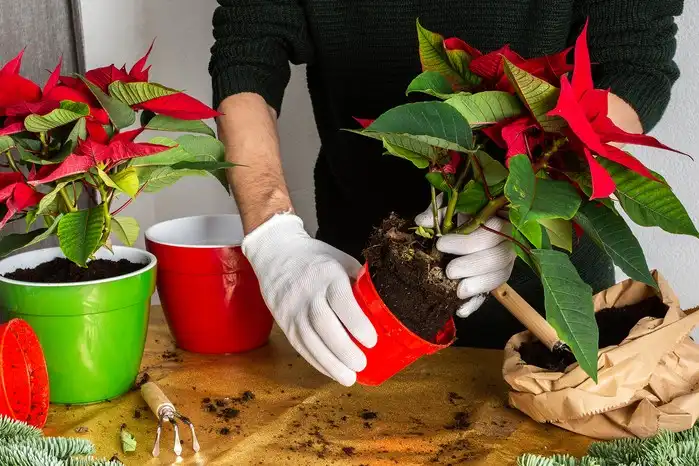
Step 5: Water Thoroughly
Water until liquid runs out of the drainage holes.
How to Improve Your Existing Indoor Potting Mix
If your mix feels heavy or compacted, add:
- Perlite → to aerate
- Coco coir → to retain moisture
- Sand or pumice → to enhance drainage
- Worm castings → to boost nutrition
This simple improvement can save struggling plants.
Troubleshooting Table: Indoor Potting Mix Problems & Solutions
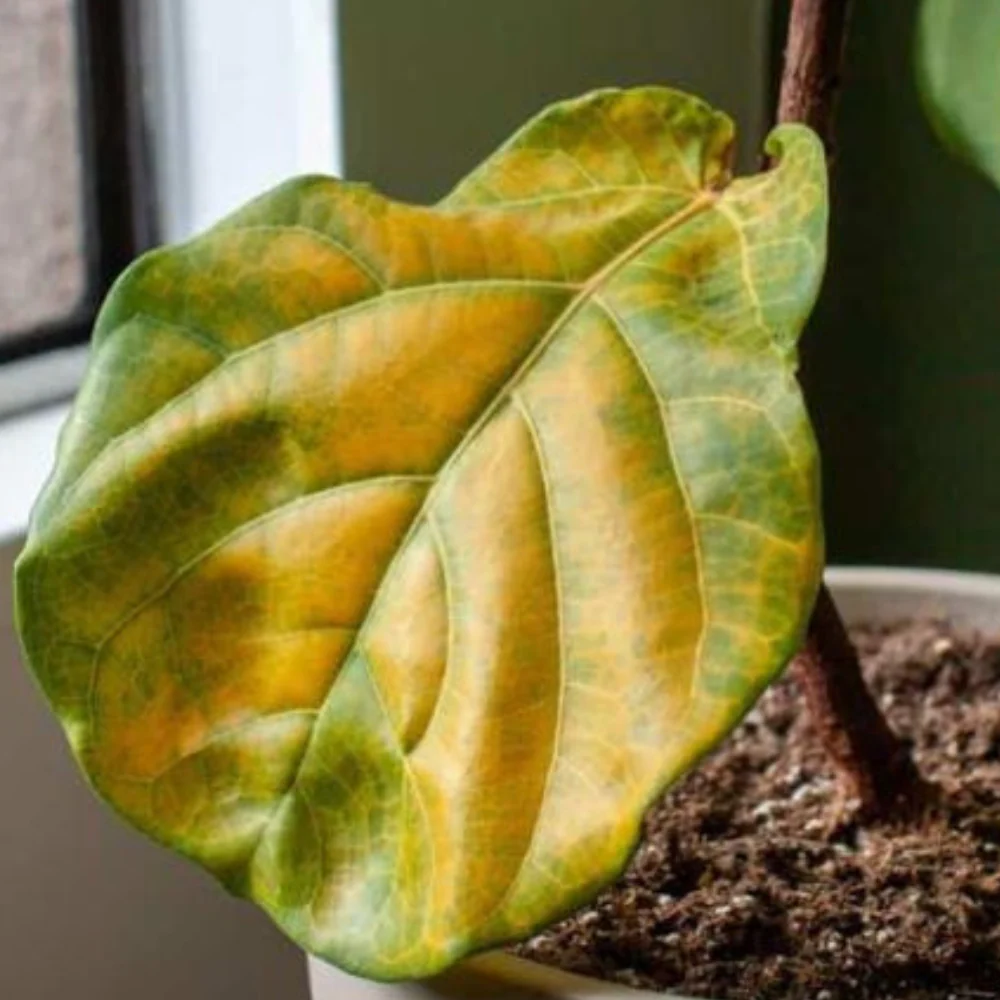
| Problem | Signs | Cause | Solution |
|---|---|---|---|
| Root Rot | Wilting, yellow leaves, mushy roots | Soil stays too wet | Add perlite, repot into airy mix, reduce watering |
| Compacted Soil | Hard soil, slow growth | Lack of aeration | Mix in coco coir or pine bark, repot |
| Yellow Leaves | Pale or yellow foliage | Poor drainage or nutrient imbalance | Improve soil mix, add compost or fertilizer |
| Slow Growth | Few new leaves | Low oxygen at roots | Add perlite and loosen soil |
| Mold on Soil | White fuzzy layer | Poor airflow, overwatering | Add cinnamon, reduce watering, increase airflow |
| Fungus Gnats | Small black flies | Soil too moist, organic buildup | Let soil dry, add sand layer, use sterile mix |
| Dry Soil Too Fast | Leaves droop between waterings | Too much sand or perlite | Add coco coir or vermiculite |
| Water Sitting on Top | Water doesn’t absorb | Hydrophobic dry soil | Pre-soak soil, water slowly in stages |
Final Thoughts
Choosing the right indoor potting mix for healthy plant roots can completely transform the way your plants grow. A well-balanced mix ensures proper moisture, airflow, nutrition, and disease prevention, ultimately giving your plants the strong rooting system they need to thrive.
Whether you’re a beginner or an experienced indoor gardener, understanding your potting mix is one of the most important steps toward maintaining healthy, beautiful plants all year long.


